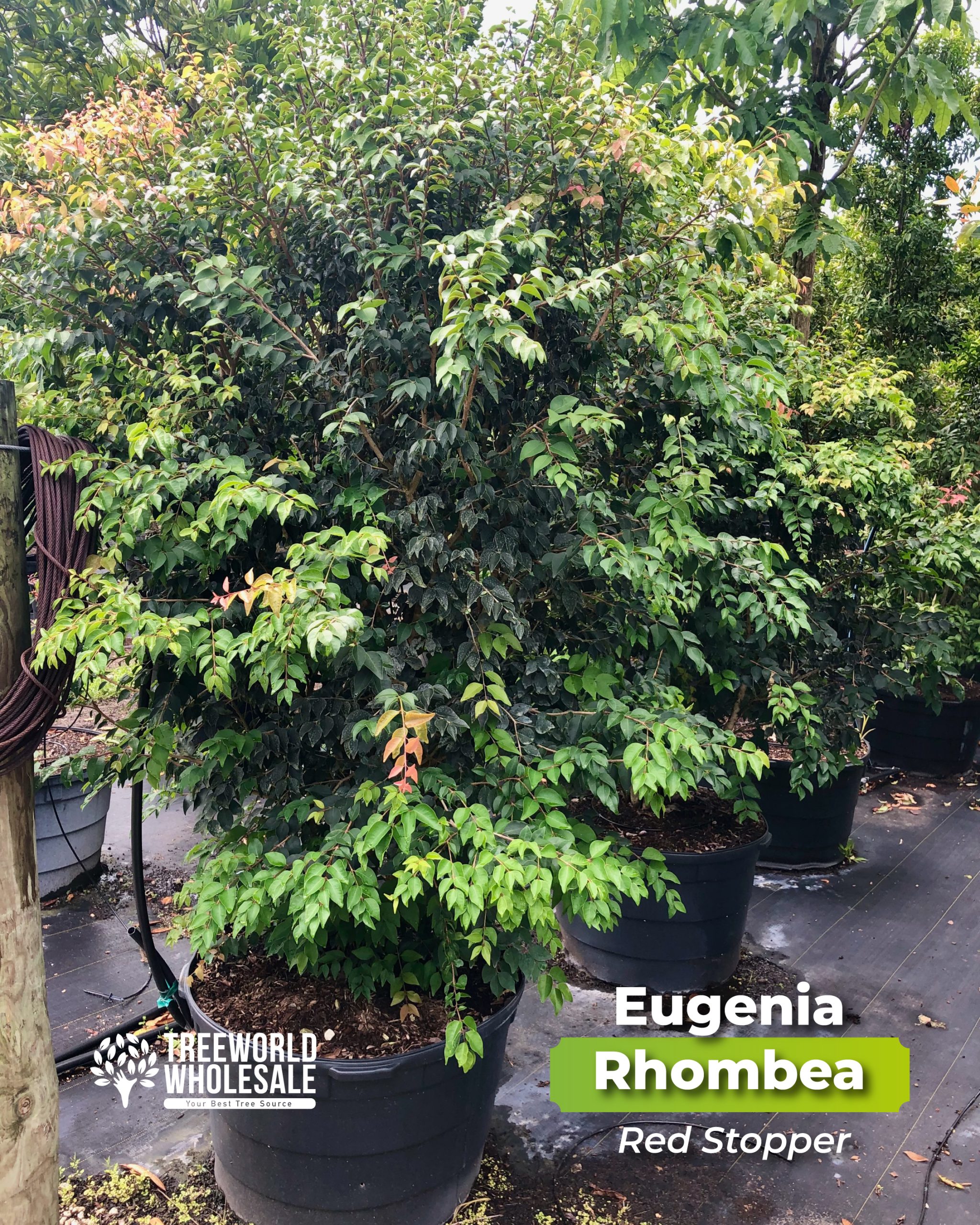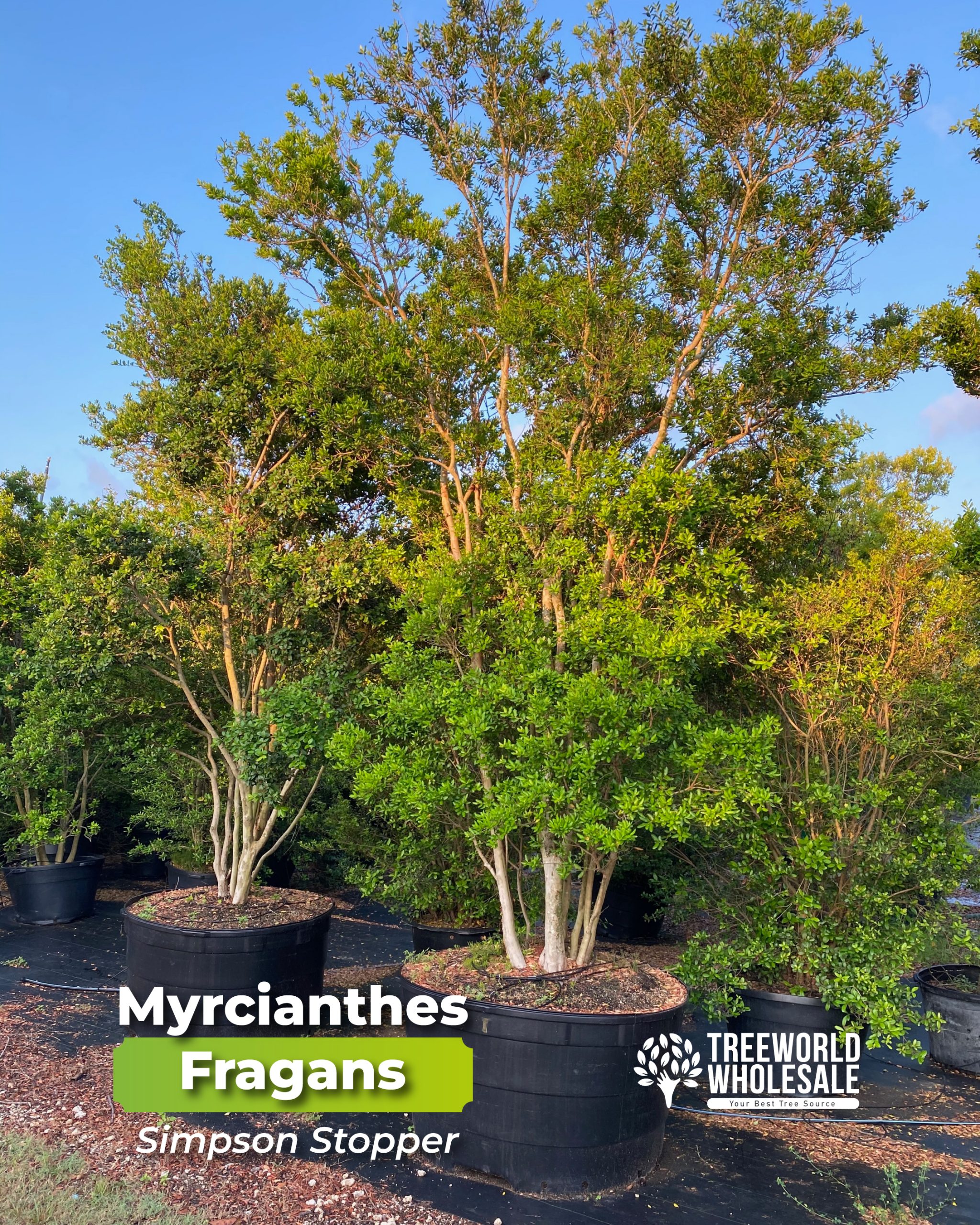Replanting your landscape after hurricane season? Hurricane season left behind significant damage. Especially considering the storms we had this year, such as Hurricane Milton, leaving us an important question, what do we do next? How can we regain confidence and replant once again? As a tree farm nursery in Florida, we know this is no easy task—it takes an immense amount of courage and love for what we do to remain resilient. We’ve said it before: battling hurricanes like Milton, one of the most intense storms we’ve ever faced, is a challenge that only trees can truly endure.
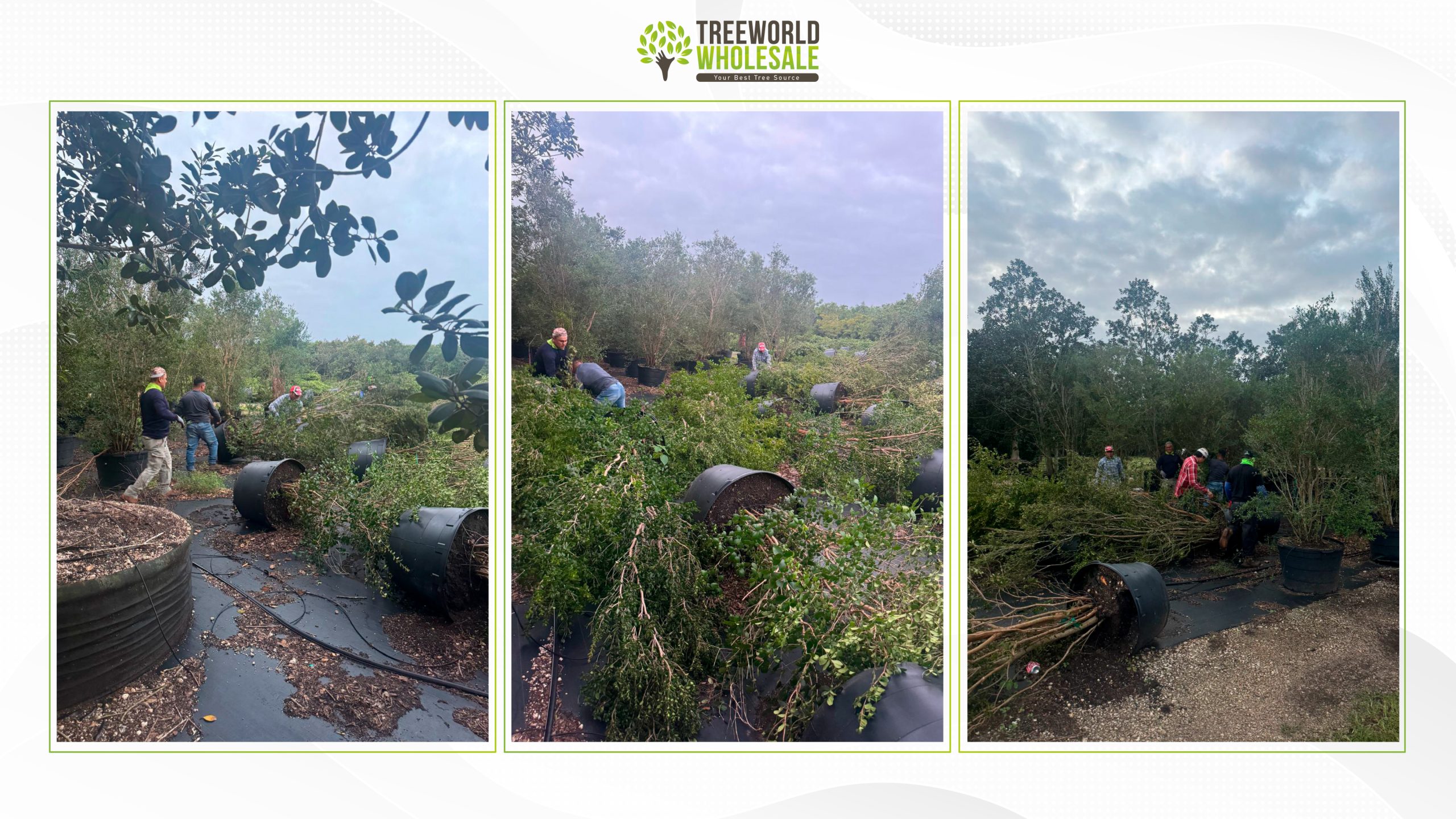
No, we are not gullible. We are strong in nature and in what we believe. But, trust me, it has become a true test to nurture trees, care for them, and help them thrive, only to see them knocked down in the process. Survival of the fittest? I’m not so sure. What I am certain of, despite the high risks and rising costs, is that we must believe in Florida. Trees will be worth the effort; sustainable and intelligent landscapes will be our reward.
As a hands-on tree nursery, here’s what we need to do to keep up the fight.
Assess damage and rebuild the landscape after Hurricane damage
We need to assess damage! We need to check for unstable trees or debris that could pose a risk. As we do in TreeWorld, we walk the property carefully, inspecting all areas of the landscape for damage to trees, shrubs, palms, and drainage. Remove broken branches and debris from trees and shrubs, preventing further damage or pest infestations. And of course, clear out drainage systems to avoid flooding and clogging.
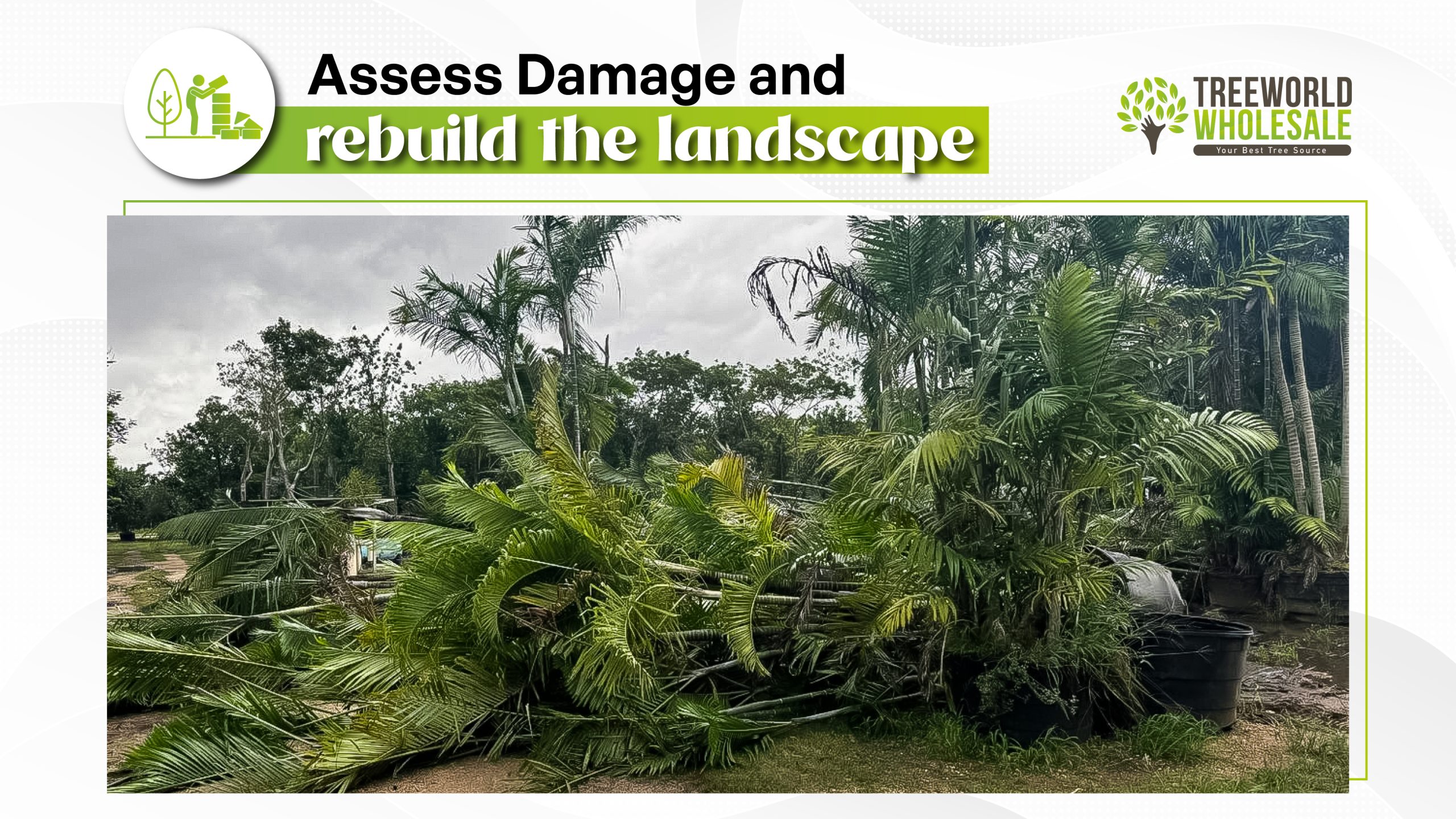
And to ensure the preservation of your property’s trees, we recommend conducting a thorough assessment, especially for larger trees like Southern Live Oaks (Quercus virginiana), Shady Ladies (Bucida Buceras), and Kapok trees (Ceiba pentandra), among others. A certified arborist should assess the extent of damage. Keep in mind that minor wounds can heal, but large cracks or root damage may require tree removal. Once the assessment is complete, please prune broken or damaged branches. In many cases, this will help leaning or split trees stabilize and then heal. And if the roots of uprooted trees maintain their health despite shallow rot, we can reset and stake them. Water the trees well and re-establish the soil around the roots.
Importantly, before thinking about replanting, check the condition of the soil, as hurricanes often lead to erosion, saltwater intrusion, or compacted soil, which can affect plant growth. To manage this properly, add compost, organic matter, or topsoil where necessary to restore nutrients. Test the pH levels, especially in areas where saltwater flooding occurred, and amend the soil to correct imbalances. Make sure that the area has proper drainage to prevent waterlogging, which could lead to root rot for new plants. And remember to check changes in light or wind exposure, as many times damaged trees may no longer provide the same shade or windbreaks
(Re) planting your landscape after hurricane
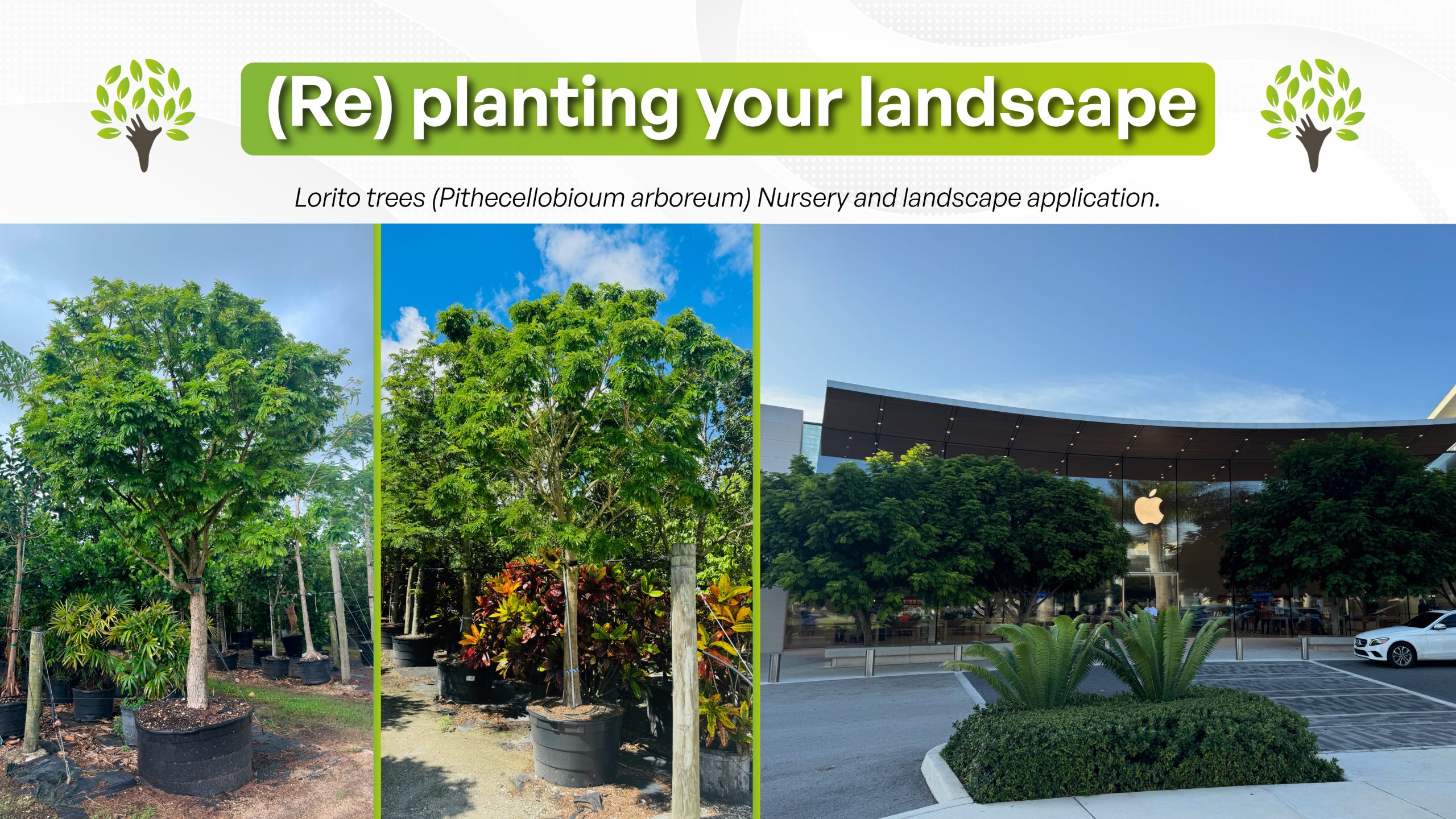
When replanting after hurricane season, it’s important to exercise strategic planning. Being in Florida, where hurricane season lasts for half the year, puts us at risk and leaves us vulnerable. These two elements shouldn’t stop us, but rather encourage us. Hopefully it will pay off. Please prioritize wind-resistant trees with strong root systems and flexible branches, such as the Loritos (Pithecellobioum arboreum), Norohnias (Norohnia emarginata), and Paradise trees (Simaruba glauca), among others, which can withstand future storms.
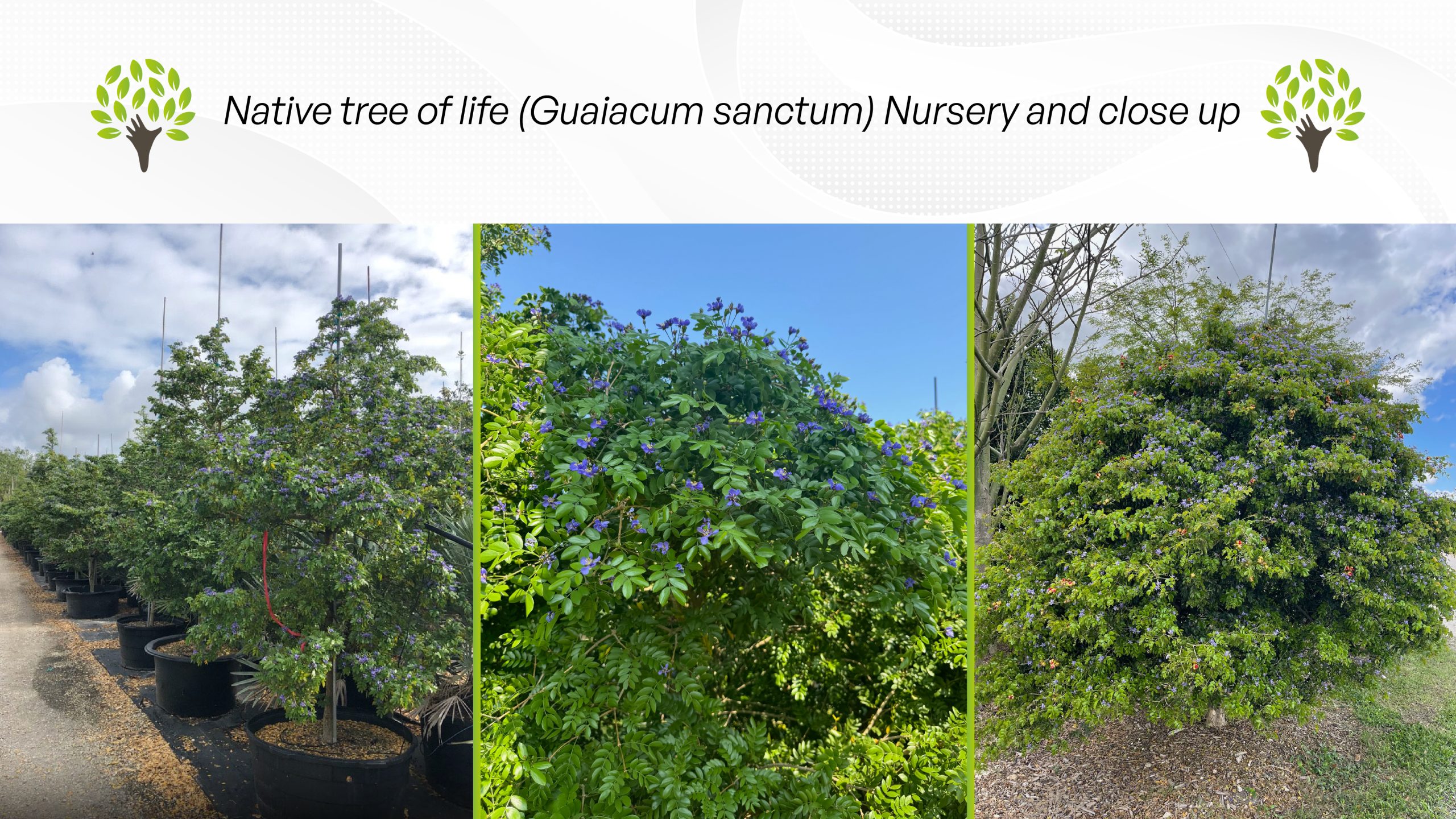
Reach out to us if you have any questions specific to your area; we will help you choose the right tree. Also use native trees like Simpson stoppers (Myrcianthes fragrans) or the Native tree of life (Guaiacum sanctum), which are naturally more resilient to Florida’s extreme weather conditions, including storms and droughts.

They require less maintenance and are more suitable for the local soil and climate. Also thing, salt-tolerant trees, especially in coastal areas affected by saltwater intrusion, trees such as Pigeon plum (Coccoloba diversifolia), either green or silver buttonwoods (Conocarpus), and another great option that although is not native but exceeds expectations is the Verawood tree (Bulnesia arborea) that once established is hardy and salt tolerant.
Resilient landscapes and diversity
Furthermore, to ensure a more resilient landscape, think about diversity. It aids in preventing complete destruction when pests or diseases target particular trees following storms. Plus, a layered approach to planting can offer more protection in future storms. Tall trees provide windbreaks, while shrubs and ground cover help protect the soil and reduce erosion.
When planting or replanting landscape trees after Hurricane season, make sure to give them space to grow and establish robust root systems. Crowded trees are more vulnerable to wind damage. Evaluate future growth by considering the mature size of trees when selecting and placing them. Ensure they won’t interfere with power lines, buildings, or other structures.
And finally, but not least importantly, plant trees that can serve as windbreaks along the edges of properties to reduce the impact of strong winds in the future. Staggered rows of trees, rather than a single line, are more effective in breaking up wind. You can think of mixed hedges that make airtight, powerful combinations, such as norohnia (Norohnia Emarginata), coastal red milkwood (Mimusops Caffra), crabwood tree (Gymnanthes Lucida), garcinia (Garcinia Spicata), and the stoppers (Eugenia rhombea, Eugenia foetida, and Myrcinathes fragrans).
A strong root system is a good foundation
So, choose trees with deep root systems to help anchor them during future storms. Species like oaks (Southern Live oak) or Gumbo Limbos (bursera Simarouba) will be more stable than shallow-rooted trees. And when replanting young trees, stake them securely to protect them from wind. Once the tree establishes a strong root system, remove the stakes to allow for natural growth.

Plus, use time in your favor; replanting after hurricane season should ideally take place during cooler months in Florida (late fall to early spring) when there is less heat and have time to establish roots before the next hurricane season. Avoid planting trees during the peak of hurricane season, if possible, to minimize the risk of damage to newly planted trees before they have fully established.
Opt for sustainable and resilient landscapes – be better prepared for next hurricane
Design sustainable and resilient landscape designs that will not only be beautiful but functional. Create spaces that meet our human needs while being gentle to the environment. Focusing on using fewer resources, protecting natural habitats, encouraging biodiversity, and building resilience to changing conditions. By adopting practices that can reduce our impact on the planet while creating healthier, more enjoyable spaces for both people and nature.

An editor’s note on what a tree costs
Value your trees and your tree nurseries! We strive to thrive in tough weather conditions like those in South Florida. Despite the challenges, we are a resilient nursery with a forward-thinking approach. Trees are an investment, so don’t underestimate their value—growing them requires significant effort. We are committed to delivering top-quality trees in a challenging environment. Every tree is carefully nurtured and thoughtfully grown, ensuring they flourish at their final destination.





